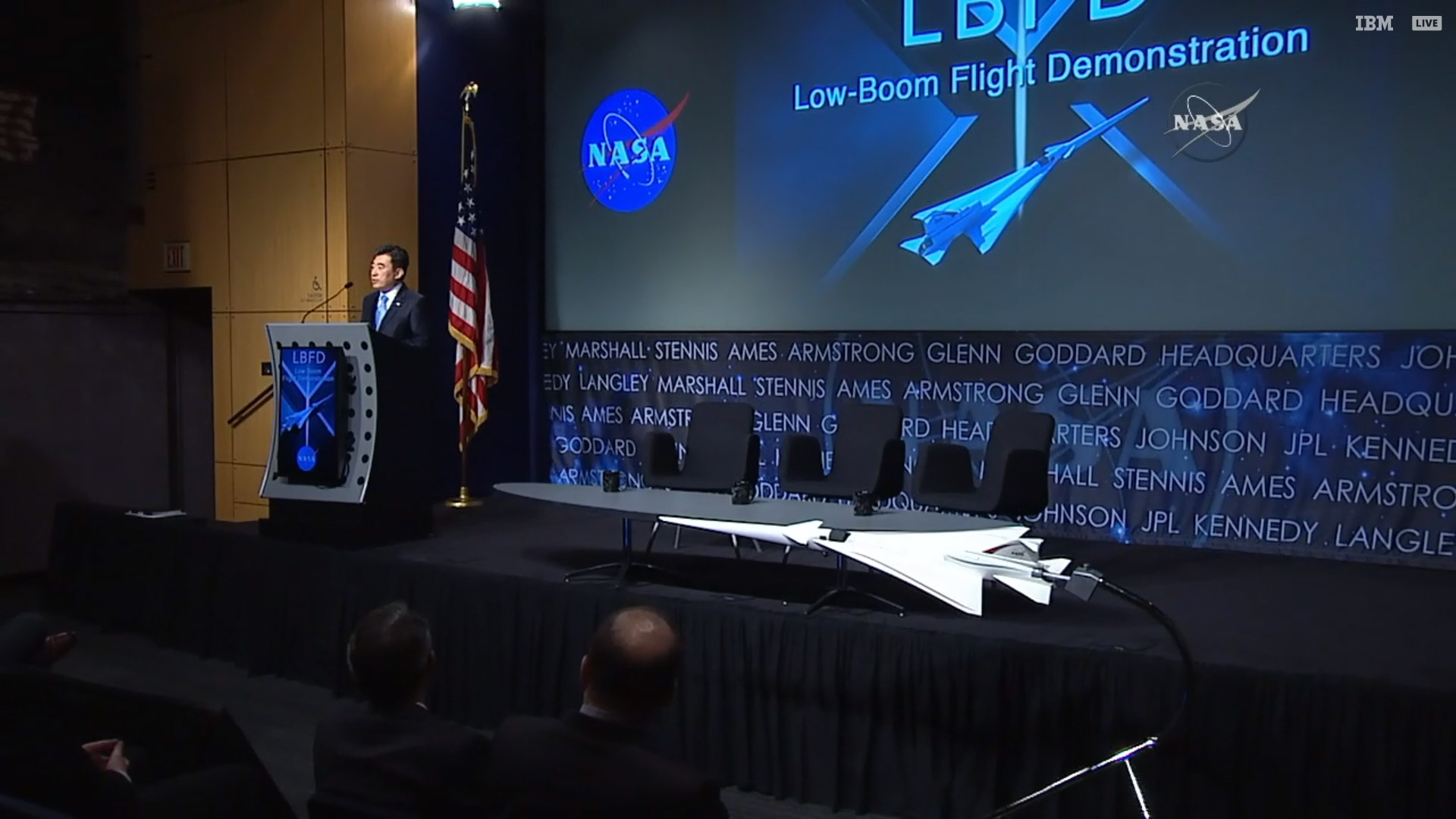Lockheed to build NASA X-plane
Supersonic design will test public tolerance
NASA announced April 3 that Lockheed Martin has been awarded a contract to build a supersonic X-plane that will test the public’s tolerance of a much quieter sonic signature, which officials took pains to avoid calling a “boom.”
The aircraft to be built by Lockheed Martin’s legendary Skunk Works will not be a prototype, nor a scaled-down version of some future business jet or transport aircraft, officials explained at a press conference broadcast online by the aerospace agency. It will instead be used to conduct supersonic overflights of populated areas in the years ahead that will be followed by surveys to capture data on how people perceive the sound of this Mach 1.4 jet designed to minimize the sonic shockwave by scattering it.
NASA has already worked with Lockheed Martin for two years designing the jet that will become the first X-plane to fly in a generation. A scale model completed in 2017 and tested in a high-velocity wind tunnel at NASA Glenn Research Center in Cleveland has changed little from the original concept. Engineers opted to reduce cost by incorporating components and subsystems from proven aircraft, including military fighters, the landing gear of an F-16 being one example of this.
“From a government point of view, we think we’re getting a bargain,” said Edgar Waggoner, director of NASA’s Integrated Aviation Systems Program, of the $247.5 million contract awarded to Lockheed Martin, the lone bidder, to build the new X-plane.
The planned first flight in 2021 will be followed by a series of test missions to confirm and validate the aircraft’s safety and gain FAA approval to operate in the National Airspace System. Flight tests over a yet-to-be-chosen list of locations with varying population densities ranging from big cities to rural areas will likely be conducted between 2023 and 2025, officials said.

Data gathered from community response surveys will then be presented to national and international aviation authorities, who will consider removal or adjustment of the longstanding prohibitions against supersonic flights over populated areas. The hope is that a combination of reduced noise created by design features of this sleek speedster, a favorable response from the test communities, and cooperative regulatory agencies and governments will facilitate the return of civilian supersonic flight not seen since the Concorde retired in 2003.
The fact that the Concorde was restricted from flying supersonic over land was arguably the single most important factor that led to its demise, since it was denied access to many of the revenue-generating routes that might otherwise have made it profitable.
Waggoner said the new X-plane’s design will prevent the sonic shockwaves created by airfoils, engine inlets, and other parts of the aircraft passing through air faster than sound waves from coalescing into a resounding “boom” that can set dogs barking and rattle windows. It will, instead, produce “a thump, or double thump, instead of a boom," he predicted.
The data to be collected from instruments and public surveys (at locations yet to be determined) will also benefit private industry, including a handful of companies working to build supersonic business jets that may rely on a similar approach to noise mitigation.




